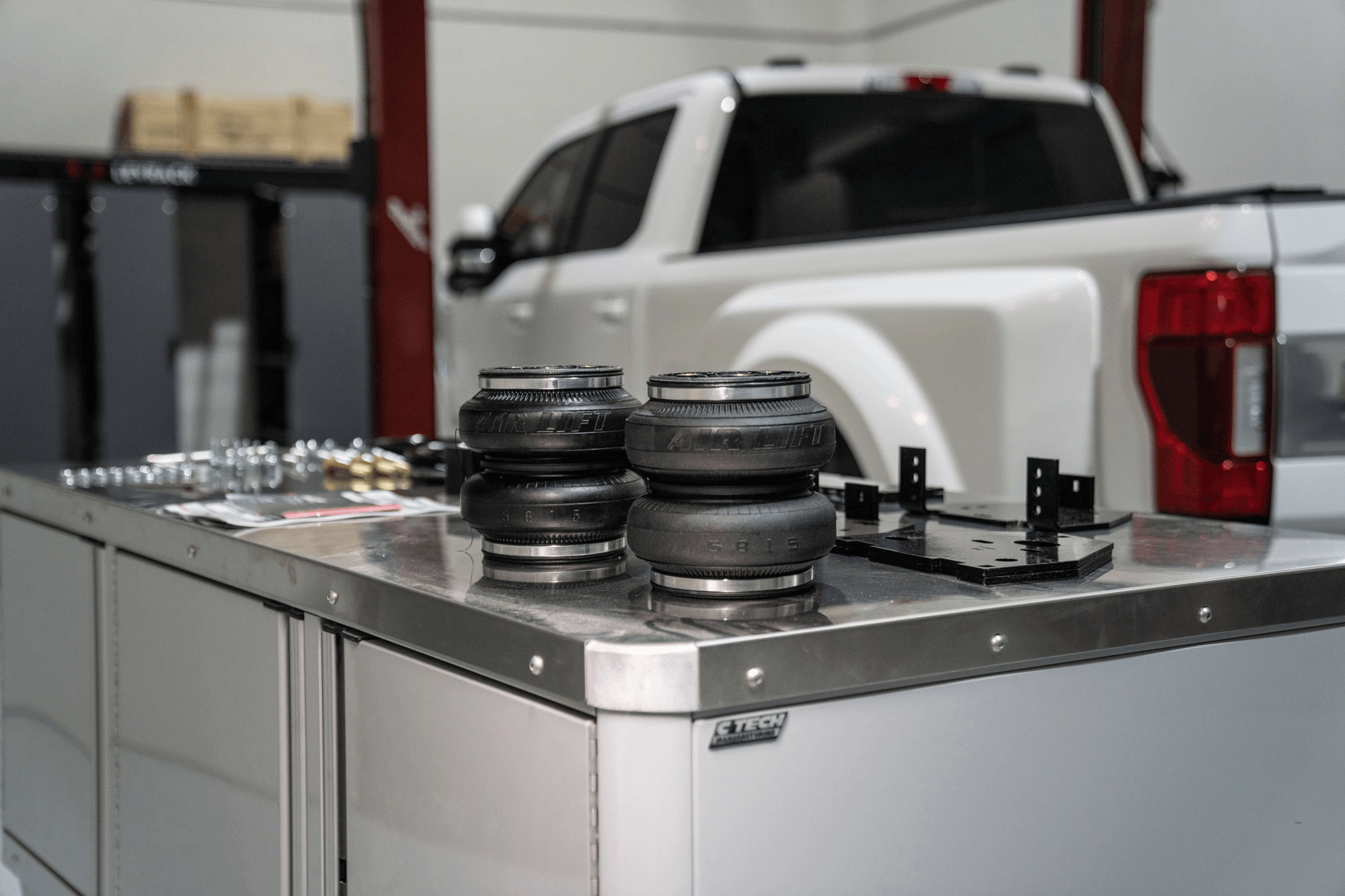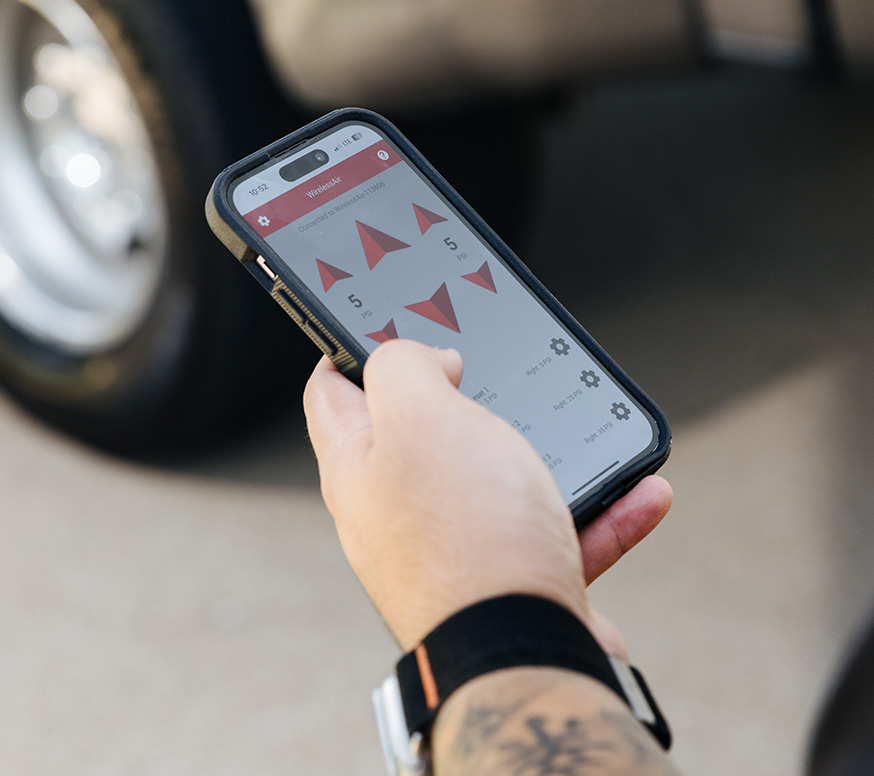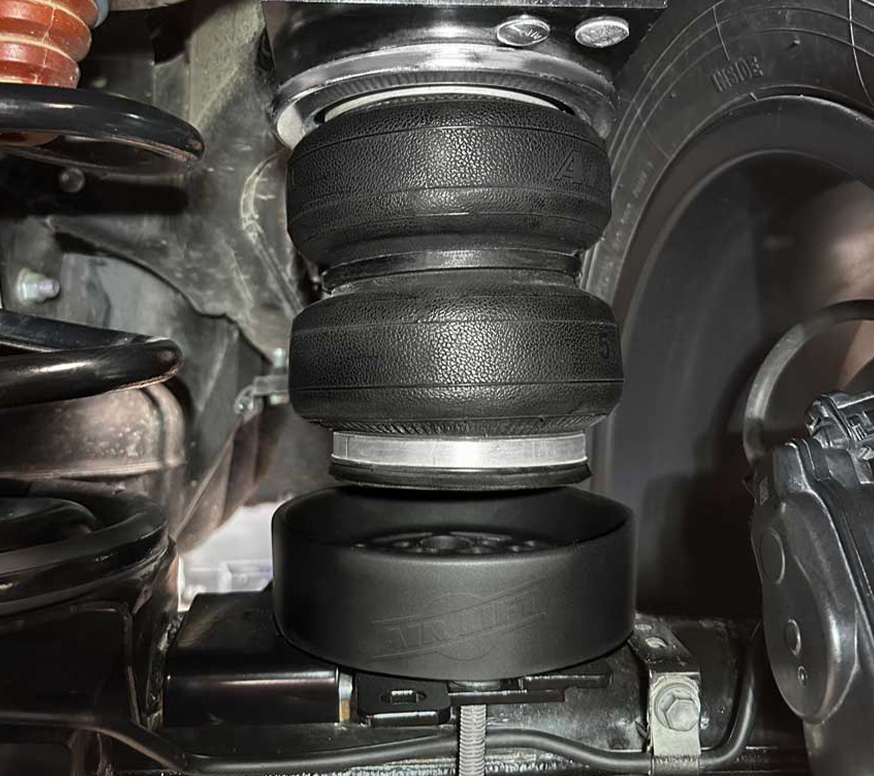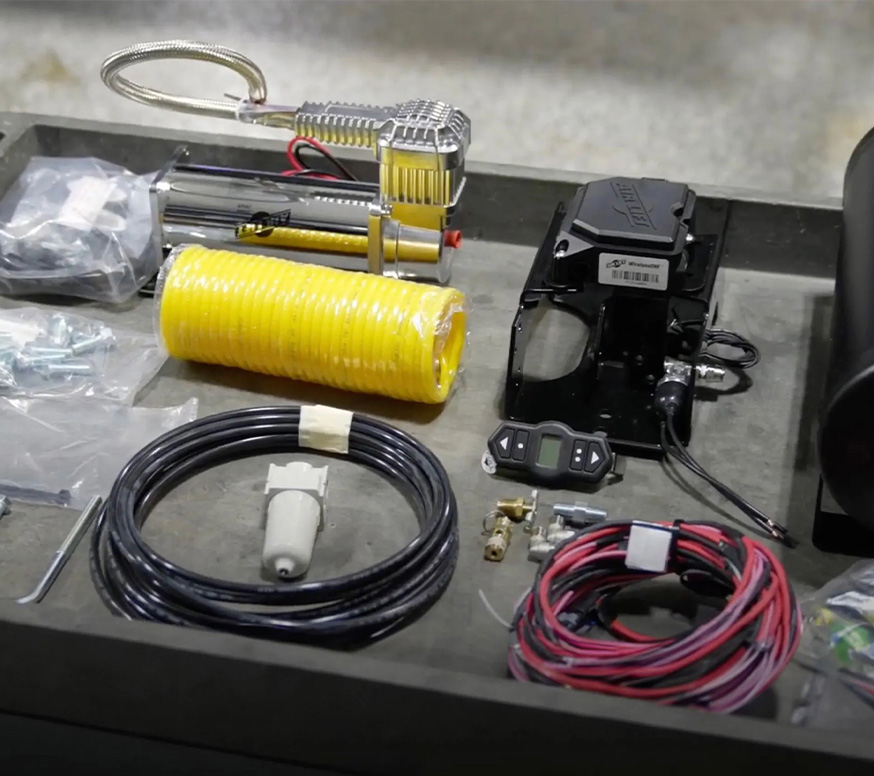
About Air Suspension
9/19/2013
Air suspension systems work with your existing leaf or coil springs to effectively solve the issues caused by stiff steel suspensions. Many years ago, air suspension systems were mainly for buses and trucks, but air suspension systems are now advanced enough to help a wide variety of customers – from those towing and hauling heavy loads or RVs – to those looking for some additional street cred with a lowered stance. Air suspension systems typically consist of air springs (also known as sleeves, bellows, or airbags) and an air line system, sometimes connected to an onboard air compressor system. Air pressurizes the air springs and raises the chassis from the axle.
So why would you want to choose an air suspension system for your vehicle? For those interested in load support, air springs are the only product that is fully adjustable and provides BOTH leveling capacity AND improved ride comfort. Adding steel springs to your suspension will give your vehicle increased load support, but the extra steel adds stiffness to your suspension which considerably decreases ride comfort when riding empty. Installing a rubber jounce bumper will also give your vehicle added load support. However, many drivers report very uncomfortable, harsh jarring when riding on rough roads.
Only air springs give you load support that is adjustable for YOUR specific load. Add air when riding loaded to ensure your vehicle is level for a safer, more comfortable ride. Deflate the air springs when riding unloaded for optimal ride quality. When weight is properly distributed to all four tires, it results in: better braking, less sway, better steering control, better headlight aim, a smoother ride and less bottoming out.
For those interested in a lowered stance, full air suspension systems provide unmatched ride and handling capabilities and deliver the lowest drop on the market. A state-of-the-art compressor control system allows drivers the versatility of cockpit adjustable ride height, something that you definitely can’t get with the common coil-over suspension.









